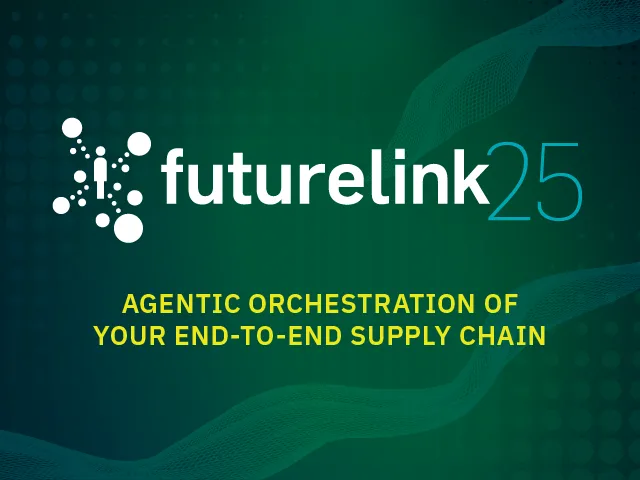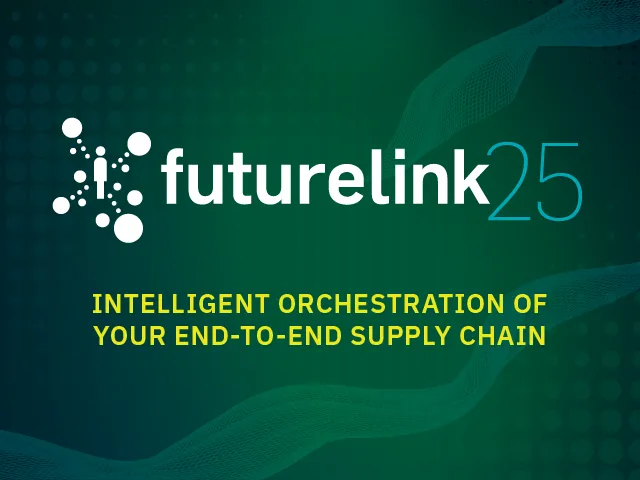Table of contents
At LogiPharma 2025 in Lyon, France, supply chain leaders across life sciences shared a common goal: finding practical, high-impact strategies to digitalize operations, improve efficiency, and drive business value across increasingly complex networks. Here are ten key themes that dominated the dialogue.
1. The Shift Toward Scalable, Network-Based Integration
Companies are increasingly frustrated with the time and complexity involved in setting up new integrations with trading partners. Many emphasized how each new partner integration can take up to six months and consume massive IT bandwidth. The Integrate Once™ model—which powers TraceLink's MINT solution—struck a positive chord as a game-changing capability that enables seamless scalability while eliminating onboarding friction. Built on the TraceLink network and powered by OPUS, MINT enables companies to exchange business transactions—POs, invoices, forecasts, ASNs, inventory balances, and more than 40 other commercial transactions—with 100% of their supply chain, without having to spend IT resources to build and maintain a new integration for each partner.
2. From Manual Chaos to Digital Harmony
Excel spreadsheets, email threads, and portals still dominate many life sciences operations. Even companies running advanced ERP systems like SAP S/4HANA are grappling with fragmented data and siloed execution. The push to eliminate manual workarounds and enable real-time collaboration is stronger than ever—especially for life sciences companies working with CMOs, 3PLs, and customers to orchestrate orders, manage inventory, and improve overall supply performance.
3. Orchestration Is the New Differentiator
“Customer orchestration” and “logistics orchestration” were two of the most frequently discussed topics at LogiPharma 2025. Companies want to optimize not just internal processes, but the entire external ecosystem. End-to-end visibility, faster issue resolution, and real-time data exchange with customers, CMOs, and 3PLs are becoming strategic imperatives. Many are recognizing that traditional automation alone is no longer enough—what’s needed is orchestration intelligence: the ability to integrate people, processes, and data across the supply chain and dynamically adapt to disruptions as they happen. With real-time insights shared across all partners, companies can move from reactive firefighting to proactive decision-making, improving collaboration, accelerating response times, and driving measurable business outcomes.
4. ERP Migrations Are a Catalyst for Rethinking Collaboration
Many companies shared that they’re either migrating to a new ERP or consolidating multiple ERP systems—and they see these transformations as prime opportunities to reimagine how they collaborate across the supply chain. While ERP systems excel at internal operations and execution, they aren’t designed for seamless multienterprise information sharing. That’s why more companies are exploring TraceLink’s MINT solution as part of their ERP modernization strategy—enabling them to digitally link with external partners and orchestrate supply chain processes beyond the four walls of the enterprise--all while supercharging the capabilities of their ERP.
5. Small Teams, Big Expectations
Supply chain and IT leaders at LogiPharma expressed that their teams are lean, but expectations are sky-high. They are expected to digitally transform operations while maintaining continuity and service levels. Many are looking for solutions that deliver tangible value without adding complexity or requiring large internal development efforts. The focus is shifting from long, resource-heavy projects to lightweight solutions that can be implemented incrementally, deliver quick wins, and scale over time. There’s a growing demand for tools that reduce operational burden and streamline collaboration—without placing additional pressure on already stretched teams. In this environment, flexibility and speed matter as much as functionality. Teams want to avoid lock-in to rigid systems and instead prioritize approaches that adapt to their existing tech stack, work with their partners’ capabilities, and accelerate time to impact.
6. CMO Collaboration: A Growing Priority
Limited visibility into contract manufacturer operations remains a persistent challenge. Inaccurate or delayed data from CMOs is causing planning issues, excess inventory, and even leading to lost sales. Life sciences companies are recognizing that ERP systems alone aren't built for the real-time, multienterprise collaboration needed to solve these issues. That’s why many are turning to TraceLink MINT to digitally link with 100% of their CMOs and enable real-time exchange of forecasts, orders, inventory levels, and production status—improving planning accuracy, strengthening relationships, and accelerating responsiveness across the external manufacturing network.
7. Growth Requires a Digital Backbone
Organizations growing at 20%+ per year or launching in new markets like Brazil, KSA, and Southeast Asia are looking for scalable digital infrastructure. The risks of maintaining manual processes—resulting in stockouts, delayed launches, missed revenue—are prompting even mid-sized players to invest in end-to-end orchestration platforms that grow with them.
8. A Shift from Tech Pilots to Business Value
Companies are moving away from exploratory tech projects and focusing instead on deploying predictable-cost solutions that deliver clear, measurable business outcomes. Many conversations at LogiPharma highlighted the growing demand for business value assessments (BVAs), defined ROI models, and real-world success stories. TraceLink’s ability to support a fast path to value stood out. With the MINT solution, companies can get up and running in a matter of weeks—thanks to the Integrate Once™ approach, no-fee partner onboarding, and flexible, multi-modal integration options, including B2B, EDI, API, or user interface options. This makes it easier to start exchanging critical supply chain data quickly and realize improvements without long, resource-intensive implementation cycles.
9. Agentic AI and the Future of Supply Chain Decision-Making
As interest in AI continues to grow, so do concerns about data integrity, governance, and auditability—especially in life sciences, where decisions must be grounded in accurate, trusted information. These concerns are shaping how companies evaluate new technologies. TraceLink’s approach to agentic orchestration is designed with these realities in mind, combining AI with real-time, multienterprise data to establish a strong information foundation. It’s a step toward enabling more intelligent, transparent, and strategic decision-making across the supply chain. This will be a key area of focus at FutureLink Barcelona 2025—held from 6-8 October, Grand Hyatt Barcelona—the premier industry event to share insights, exchange strategies, and explore the next wave of supply chain innovation. Be sure to join us there.
10. Network Effects Are the Next Frontier
One question surfaced again and again: “Who else is already on your network?” Companies are recognizing that being part of the TraceLink network gives them a real advantage—many of their customers, CMOs, 3PLs, and suppliers are already linked and exchanging data. What once felt like a future-state goal is now a practical way to reduce onboarding time, accelerate collaboration, and drive faster outcomes across the supply chain. Fortunately, TraceLink boasts a network of more than 290,000 verified partners, and its MINT solution already has more than 60 customers onboarding 250+ trading partners just 12 months after the solution's initial release.
In Closing: A Community Ready for Transformation
If LogiPharma 2025 made one thing clear, it's that the pharma industry is at a tipping point. Leaders are no longer asking “if” they should digitally transform their external supply chains—they're asking “how fast” and “with whom.” And the answer, again and again, is increasingly pointing to TraceLink.
Let’s keep the conversation going. Contact us to schedule a meeting today, or join us at our upcoming seminars in Frankfurt and Paris. See you there!






